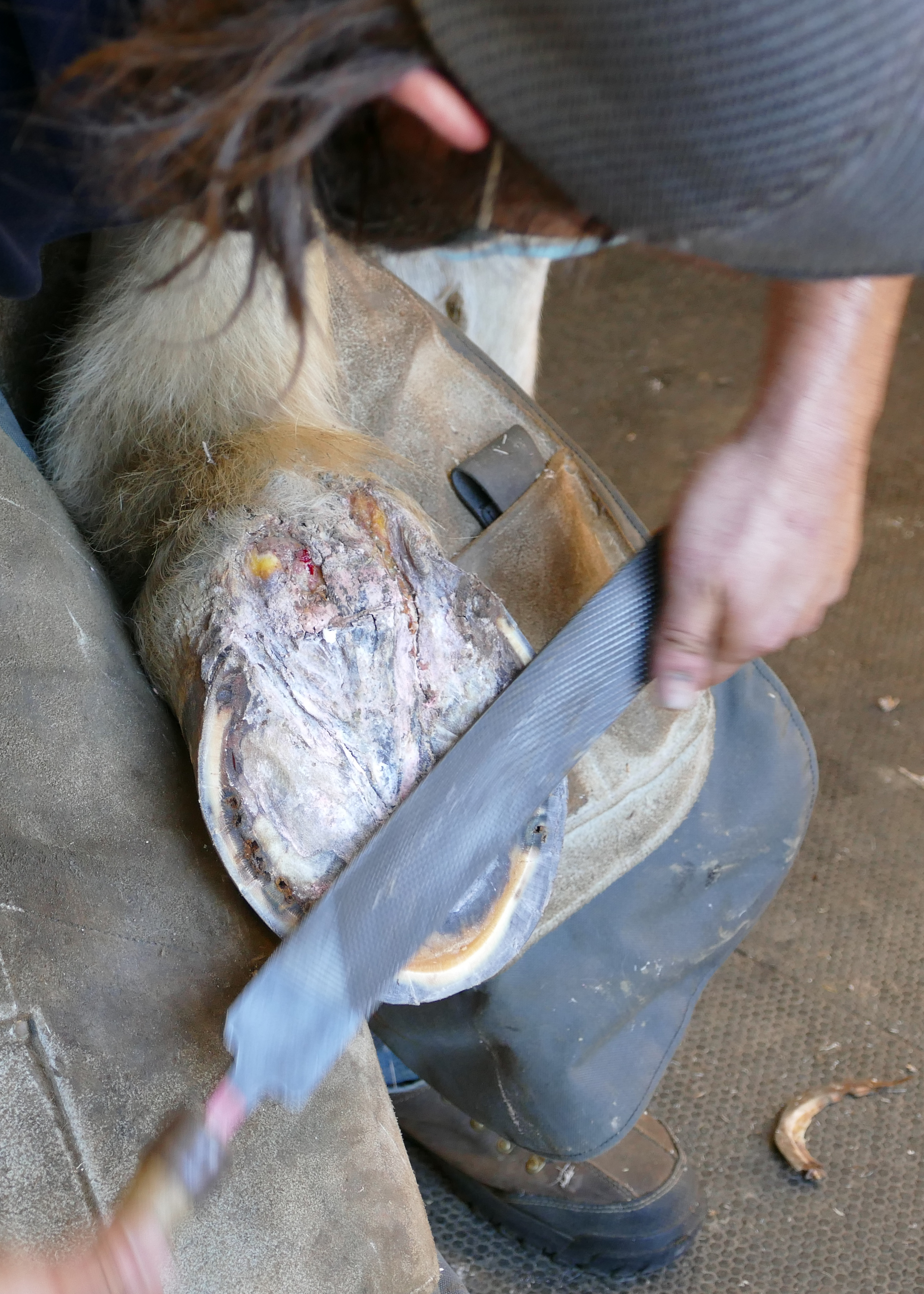Andalusian cross gelding recovers after suffering from debilitating disease of the hoof
January 13, 2022

If you care for or ride horses, you will at some point deal with thrush, a common bacterial infection in the frog area of the hoof. Less common, however, is canker, which can be difficult to treat successfully. Because it is not associated with wet or unhygienic conditions — as is the case with thrush — canker can occur in horses that are well cared for and receive regular hoof care.
Riki Tiki Tavi, aka RTT, a 22-year-old Andalusian gelding owned by Dian Kimmell of Brinklow, Maryland, was initially assessed on the farm by Alex Yerkes of Damascus Equine Associates in Mount Airy, Maryland. After Yerkes performed a biopsy of the growth on RTT’s feet, her fear that the gelding was suffering from canker was confirmed. She referred RTT to the Equine Medical Center for surgery and aftercare.
During a thorough examination of RTT, Maureen Kelleher, clinical assistant professor of sports medicine and surgery, noted advanced canker tissue in both front hooves, localized in the palmar region at the base of the frog. Less severe canker tissue was also found in RTT’s hindlimbs. In addition, admission blood work revealed elevated creatinine, a kidney value.
Treatment would require intensive surgical debridement of hyperplasic tissue on all affected areas. Due to concerns with RTT’s kidney values, he was placed on intravenous fluids prior to surgery.
During surgery, after sharp debridement was completed, each foot was treated with surgical laser for more-superficial debridement of the newly exposed tissue. The tissue removed was sent for culture and MicroGen microbial DNA diagnostic analysis.

Due to RTT’s increased heart rate post-surgery, the center’s internal medicine team performed a thoracic ultrasound with a brief cardiac ultrasound. Results of these tests necessitated a transtracheal wash, which obtained cloudy, mucus-filled fluid. The center’s laboratory evaluation of the collected fluid suggested that RTT needed antibiotics to resolve an existing respiratory infection.
Once RTT’s feet were stabilized, therapeutic surgical plates on bar shoes were needed to support his feet while they healed. RTT weighs in at a hefty 1,400 lbs., and as an Andalusian/Shire cross with size 8 feet, he had never needed shoes. Luke Goodness of Goodness Farrier Associates patiently worked on RTT’s feet, installing treatment plates on his forelimbs one day and returning a couple of days later to set hindlimb plates. Goodness reported that RTT behaved impeccably during the entire process!
Because the surgical plates did cause RTT some discomfort, he returned to the onsite farrier shop for reevaluation. Amy Sidwar-Seaver of Goodness Farrier Associates devised rubber plates to cushion the bolts on the surgical plates, providing RTT with a little additional cushioning.
After seven days in the hospital, RTT returned home for continued care and rehabilitation. It has been a long road, requiring several visits to the center for evaluation and therapeutic farrier care. Due to the exceptional dedicated aftercare of his owner, the skills of the center’s clinicians and support staff working in tandem with highly skilled farriers, RTT has now made a full recovery.
“Although it has been a long haul,” said Dian Kimmell, “I am so grateful for the creativity and artistry of the Goodness farrier team, my primary care veterinarian Dr. Yerkes, and the expert clinical intervention of Dr. Kelleher and her team. Without this group effort, RTT would not have had the chance to recover.”



